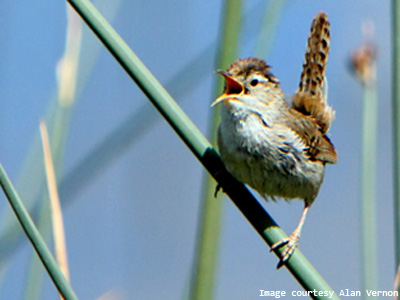Don’t make a (#)hash(tag) of Twitter
Posted on 14 March 2013
Don’t make a (#)hash(tag) of Twitter
 By Alexander Hay.
By Alexander Hay.
We’ve had scepticism. We’ve had getting more followers. Now, in the third instalment of our series on Twitter, we look at spring cleaning your feed, and making the most out of your hashtags.
While giving the Institute’s Twitter feed a proper spring clean, several things were made all too clear to me.
For starters, you'd be amazed at how many university computing departments do not have their own Twitter feed. This is a bit like an English Literature department full of people who can't read, an Archaeology graduate who can't dig or a Sports Studies course where no one ever wears tracksuits to lectures.
Then there are the many Twitter followers who serve no point at all. As a rule, if you are following more than 20% of the people you're being followed by then start purging those excess tweeters right now. If they were really that interested in your own feed, they'd have returned the favour a long time ago. In the meantime you resemble a desperate undergraduate that joins all the university societies in their first week, including the one where ferrets are dropped down your trousers.
Still, this leaves a big question. Why use Twitter at all? Well in part, it's because if you do it right, you can have thousands of followers, who can and do convert their interest into clicking on links and so driving up traffic to your site.
The maximum 140 characters per tweet also enforces a certain discipline and focus to your outpourings, something other social media platforms lack. Being a regular Tweeter also makes a good impression. According to research by Cambridge University, most dedicated Twitter users tend to be "emotionally stable" and "extroverts." Meanwhile, the most popular users tend to be more "imaginative" and the most influential give off a suitably "organised" vibe. All of which makes your brand far more desirable through association than if you used another platform, such as the rambling never-ending drama and privacy nightmare that is Facebook.
There is one problem for wannabe Twitterers - hashtags. These consist of a popular keyword presaged by a '#'. So #shopping or #dolphin, for example. If added to your tweet, this means it will show up on searches along with all the other tweets that use the same hashtags, which is a useful way of promoting your tweet by riding on the trending wave.
The problem lies in what #hashtag to use. Jumping on bandwagons, from a research perspective, isn't going to make much sense. Unless your work somehow relates to currently in-vogue terms like #justinbieber or #FictionalCharactersIWantToMarry, there may be a problem in making your tweets visible. More to the point, hashtags have the lifespan of gnats and fade away very quickly. How best to spot a (relevant) trend before it ceases to be?
The answer is easy - cheat. Keep an eye on the Twitter threads you find most relevant to your work. What hashtags do they keep using? Which ones seem to attract the right responses? Other people are doing all the heavy lifting for you in terms of Twitter hashtags. You just need to keep watching them to see what trends are catching on in your field. This will require patience, curiosity and a willingness to think carefully about the work you are promoting on Twitter.
So, remember the following rules. Pick a way of writing that best promotes your work. This can vary from Twitter feed to Twitter feed, so know what your audience responds to. Keep up to date with hashtags that are both current and relevant – and use them. Don’t use irrelevant hashtags just because they’re popular. For example, just because #python is trending because a real one recently ate David Cameron is no reason to use it to promote your blog on the Python programming language. Remember to keep track of your traffic: are your tweets driving it up, or not? And in either case, find out why.
Finally and most importantly, post something new every day. All the hashtags in the world will not help if people either think your account is dead due to low or no use, or if you don't post something interesting on a regular basis. Twitter is surprisingly hard work for just 140 characters, but its success in attracting new readers to your site is well worth the effort. And be sure to spring clean on a regular basis.
